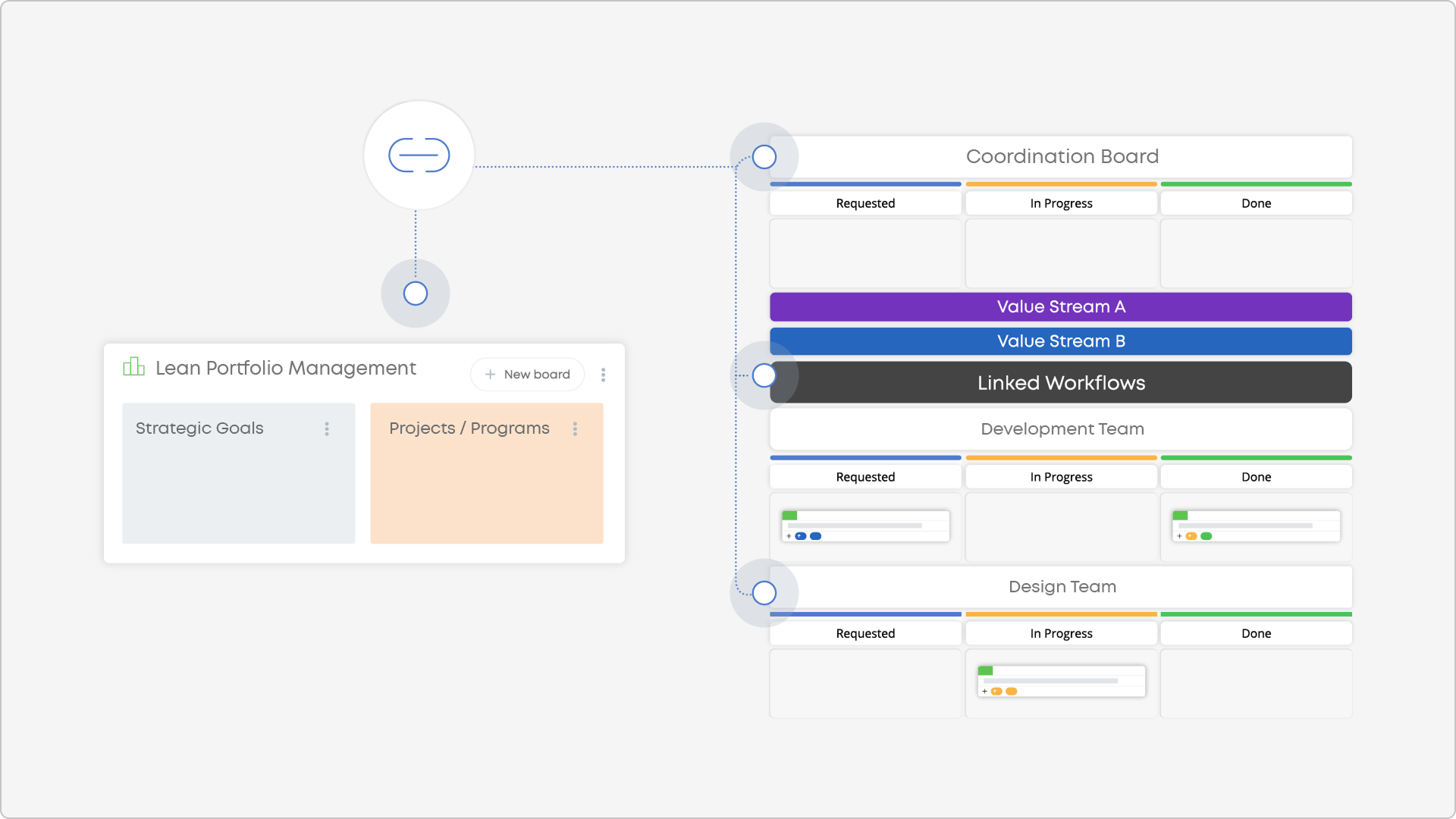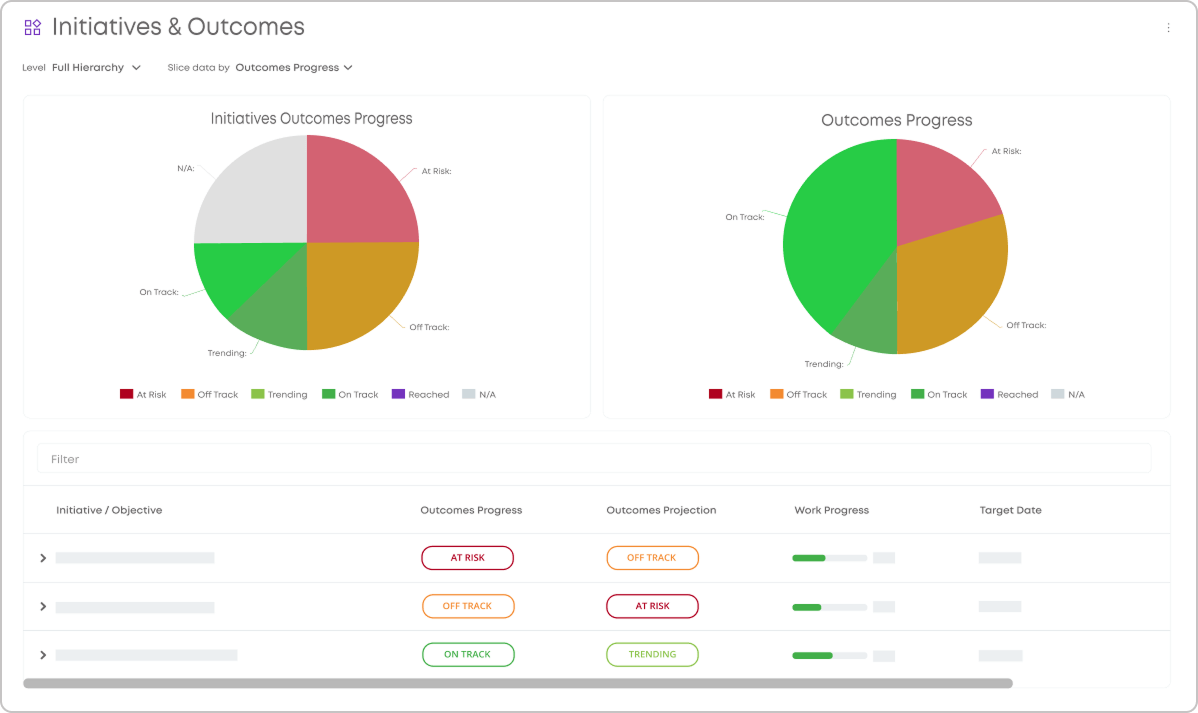Key Takeaways
- Definition: Strategy execution is turning strategic goals into concrete actions that deliver measurable results.
- Main Components: Planning, alignment, communication, measurement, and adaptation.
- Biggest Challenges: Poor alignment, missing leadership capabilities, change resistance, and lack of visibility.
- How to Succeed: Use proven frameworks (OKRs, Balanced Scorecard, Hoshin Kanri, Flight Levels), reinforce leadership accountability, and connect daily work to long-term goals.
- Target Outcome: Strategy execution is not about having a plan - it's about delivering business value consistently.
What Is Strategy Execution?
Strategy execution is the process of translating high-level plans into day-to-day operations so that strategic goals actually materialize. Without execution, strategy is just a document.
According to a PwC survey, only 35% of executives believe their strategy will lead to success because the majority fail to bridge planning with delivery.
Effective execution requires:
- Clear Objectives (what to achieve).
- Aligned Resources (who does what, and when).
- Transparent Monitoring (how to measure).
- Continuous Feedback (how to adapt).
Frameworks like OKRs, Hoshin Kanri, and the Balanced Scorecard have become widely used to structure these elements.
Why Is Strategy Execution So Important?
A plan without execution is a wasted opportunity. Studies show 60–90% of strategic plans never launch.
Execution is the bridge between vision and results.
When done right, strategy execution:
- Aligns the company around a shared vision.
- Improves decision-making with clear priorities.
- Builds agility, so the company adapts to market shifts.
- Creates accountability and transparency, making sure leaders and teams own outcomes.
Take Netflix as an example. Its international expansion was not only a bold strategy but also a carefully executed plan: starting small in Canada, learning, then scaling to 190+ countries while adapting content to local cultures. (source: HBR)
The 7 Pillars of a Successful Strategy Execution
The seven pillars of a successful strategy execution include:
1. Designing a Data-Backed Strategy
Successful execution begins with a well-crafted strategy that is both data-backed and adaptable. This means analyzing internal capabilities and external forces such as competitors, customer needs, and market trends, then refining direction iteratively as conditions shift.
2. Defining Business Objectives
Once the strategy is set, it must be translated into measurable objectives that guide daily decisions and resource allocation. Clear, realistic, and time-bound goals - often framed through OKRs (Objectives and Key Results) - provide direction and motivation for teams.
3. Aligning Company & Functional Goals
True execution requires connecting company-wide goals with departmental and team objectives so that no effort is wasted in silos. Alignment ensures all functions contribute directly to strategic priorities, creating cohesion across the organization.
4. Visualizing All Objectives
Even the clearest goals can fail without visibility, which is why organizations must make objectives transparent and easy to track. OKR dashboards, work boards, or strategy execution platforms give everyone a shared view of progress and priorities.
5. Connecting Goals with Work Progress
Execution succeeds only when goals and daily work are seamlessly linked, preventing teams from drifting into activities that don’t add value. By mapping tasks and projects directly to strategic objectives, organizations can track whether their efforts are truly moving the needle.
6. Monitoring & Measuring Progress
Clear measurement is the backbone of execution, allowing organizations to validate results and adjust direction in real time. Dashboards, Balanced Scorecards, and OKR tracking tools provide a single source of truth for performance at all levels.
7. Adapting to a Changing Environment
Markets evolve rapidly, and organizations must adapt just as quickly by fostering an agile culture of continuous improvement. This involves setting regular cadences for reviews, retrospectives, and strategy updates at team, operational, and executive levels.
What Common Challenges Hinder Effective Strategy Execution?
Despite the importance, most organizations hit roadblocks. Research and real-world cases highlight these recurring challenges with successful strategy execution:
- Unclear Strategy Communication: 4 in 5 executives admit their strategy isn't well understood internally.
- Leadership Gaps: Half of leaders lack the skills to act as "strategic executors."
- Silos & Misalignment: Departments optimize for themselves instead of company goals.
- Change Resistance: 47% of businesses say resistance slows adoption of new practices.
- Slow Adaptation: Bureaucracy and competing priorities delay action.
- Overloaded Middle Managers: The "cluttered to-do list" problem limits focus and coaching.
Case in Point: Brazilian credit bureau Boa Vista struggled with siloed operations during digital transformation. By combining Kanban practices with OKRs and supported by Businessmap's strategy execution platform, they created transparency across levels, aligning strategy with execution.
Read the full Boa Vista case study →
How to Plan, Align, and Monitor Strategy Execution Effectively?
Here's how you can bring strategy execution to success, referring to best practices, proven approaches, and tools.
Step 1. Make Strategy Transparent
Create a strategic roadmap and visualize objectives in a shared place. Tools like Businessmap help create a strategic planning space using digital whiteboards, reinforcing visibility at every level.
Step 2. Align Strategic, Tactical, and Operational Work
The Flight Levels model by Klaus Leopold can be used to show how strategy (level 3), coordination (level 2), and operations (level 1) must stay connected.
- Level 3: Define strategic OKRs.
- Level 2: Manage value streams across departments.
- Level 1: Link team work to strategic goals.
Using portfolio boards in Businessmap allows you to create a map between your high-level goals and actual work.
 Connecting strategic and coordination boards in Businessmap
Connecting strategic and coordination boards in Businessmap
Step 3. Monitor & Adapt
Use dashboards, OKR reviews, retrospectives, and operational reviews.
 An executive dashboard to monitor strategic goals' progress in real-time in Businessmap
An executive dashboard to monitor strategic goals' progress in real-time in Businessmap
What Tools or Frameworks Assist in Strategy Execution Management?
Here are some of the most effective tools:
| Framework/Tool |
Best For |
| OKRs |
Goal alignment & measurement |
| Balanced Scorecard |
Linking strategy to KPIs |
| Hoshin Kanri |
Cascading objectives across levels |
| Flight Levels |
Connecting strategy with delivery |
| Strategy Execution Platforms (e.g., Businessmap, AchieveIt, Cascade) |
End-to-end execution management |
Building an Execution-Driven Culture
Execution is not a one-time project - it's a discipline. The most successful companies (Amazon, Apple, Netflix, P&G) prove that clear goals, alignment, agility, and relentless monitoring turn vision into outcomes.
If you want to close your execution gap:
- Start with transparency.
- Empower leaders and middle managers to act as executors.
- Adopt frameworks.
- Use technology to connect strategy and execution.
Execution is the true competitive advantage. A good strategy is only as valuable as its ability to deliver results.
How Two of The Largest Organizations in the World Save Time & Money with OKRs?


 Connecting strategic and coordination boards in Businessmap
Connecting strategic and coordination boards in Businessmap An executive dashboard to monitor strategic goals' progress in real-time in Businessmap
An executive dashboard to monitor strategic goals' progress in real-time in Businessmap





